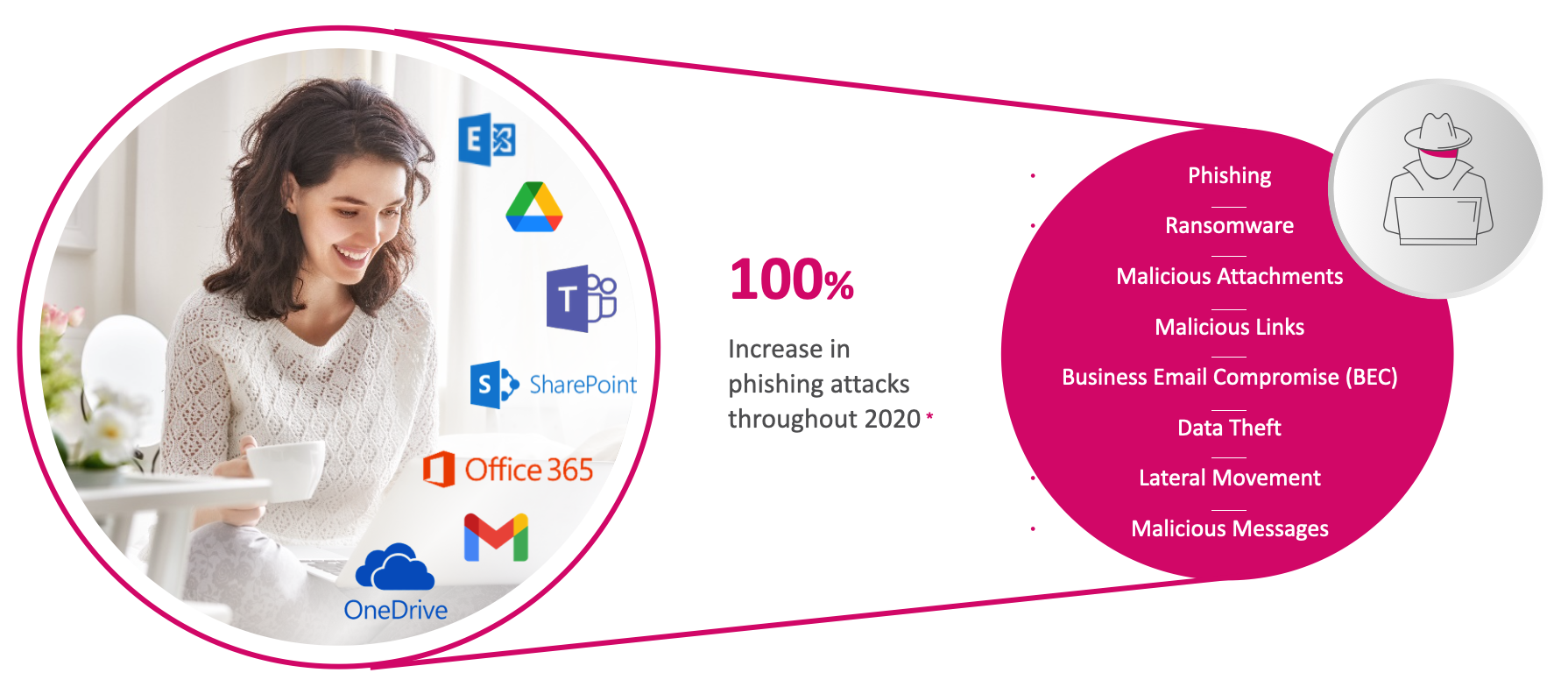Software-as-a-service (SaaS) is an on-demand, cloud-based software delivery model that enables organizations to subscribe to the applications they need without hosting them in house. SaaS is one of several categories of cloud subscription services, including platform-as-a-service (PaaS) and infrastructure-as-a-service (IaaS). Some well-known SaaS applications include Microsoft Office 365, Salesforce.com, Cisco Webex, Box, and Adobe Creative Cloud. According to Market Research Future, the global SaaS market is expected to grow 21% annually for the next few years, reaching $117 billion by the end of 2022. This growth in the popularity of software-as-a-service is due to:
- On-demand and scalable resources. Organizations can purchase additional storage, end-user licenses, and features for their applications on an as-needed basis.
- Fast implementation. Organizations can subscribe almost instantly to a SaaS application and provision employees.
- Easy upgrades and maintenance. The SaaS provider handles patches and updates, often without the customer being aware of it.
- No infrastructure or staff costs. Organizations avoid paying for in-house hardware and software licenses with perpetual ownership.
SaaS providers handle much of the security for the cloud application. The SaaS provider is responsible for securing the platform, network, applications, operating system, and physical infrastructure. However, providers are not responsible for securing customer data or user access to it.
Microsoft was the most imitated brand in 2020. - Threatcloud
While SaaS applications help increase business agility, they also challenge traditional security approaches. SaaS apps are:
- Exposed: SaaS applications merely require an internet connection to be accessed from any device, location, and user.
- Provided as an external service: SaaS applications cannot embed existing security controls and provide risk visibility as needed.
- Equipped with minimal built-in security: Frequently, SaaS applications only have minimal default security that allows unrestricted file sharing and malware delivery.
Several types of security solutions can help organizations improve SaaS security. The solutions can be implemented separately or together as part of a CASB.
- Phishing Protection: Utilize artificial intelligence to detect & block phishing, spear phishing, email spoofing, and further clever phishing attacks that manage to bypass other security solutions.
- Anti-Ransomware: Block Ransomware attacks before they reach the mailbox. Advanced malwares are blocked and consolidated reports generated.
- Identity Protect: Ensure security of your users by mitigating account takeovers and visibility into unauthorized account activity.
- Data loss prevention (DLP) : safeguards intellectual property and protects sensitive data in cloud applications, as well as at endpoints such as laptops. Organizations can define data access policies that DLP enforces.
- Uncover Shadow IT: Identify unsanctioned SaaS applications in use and ensure compliance throughout the organization.
NGS's SaaS Security platform provides complete protection against targeted attacks like zero-days, phishing, and account takeovers thereby uncovering SaaS threats, and preventing breaches on SaaS applications. The solution is based on an API architecture resulting in immediate rollout and detection of attacks within minutes of deployment.

